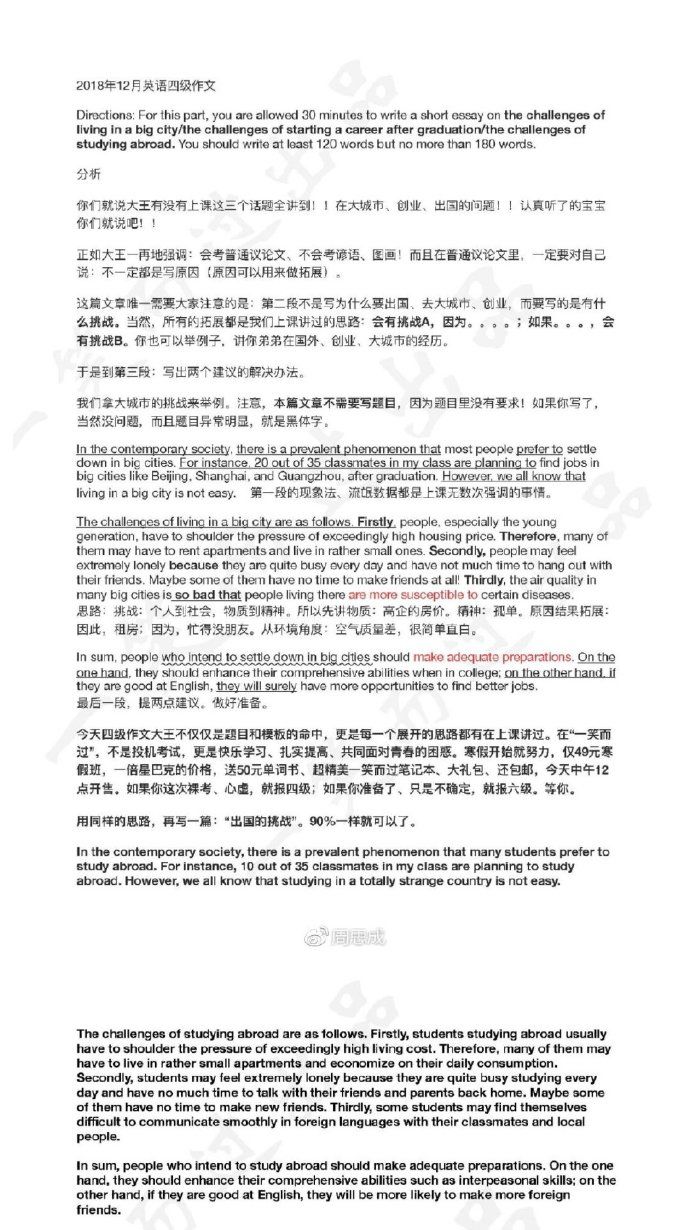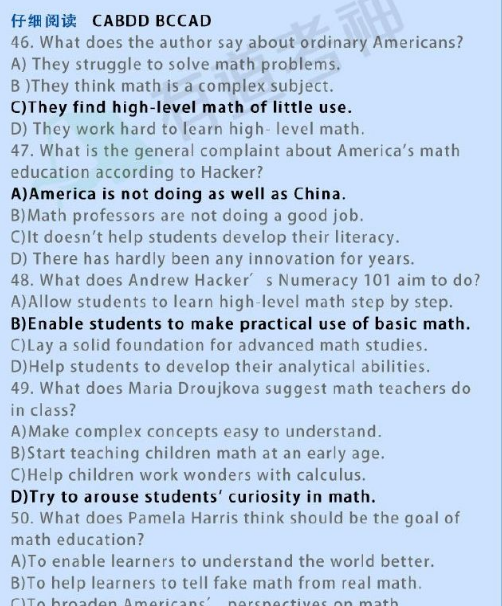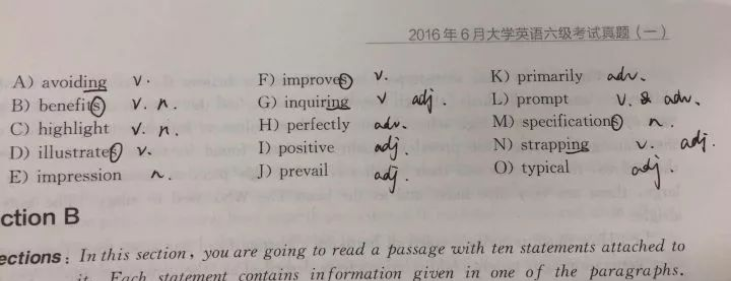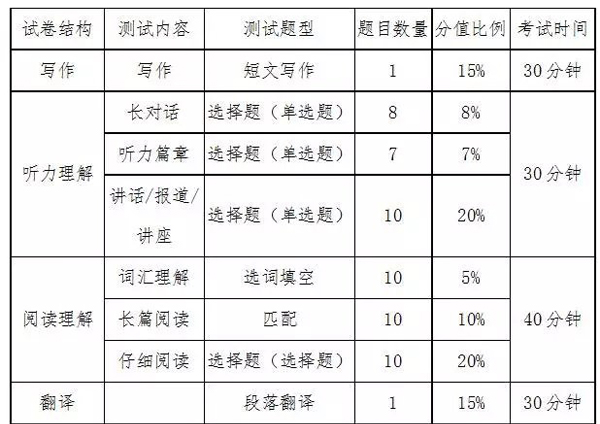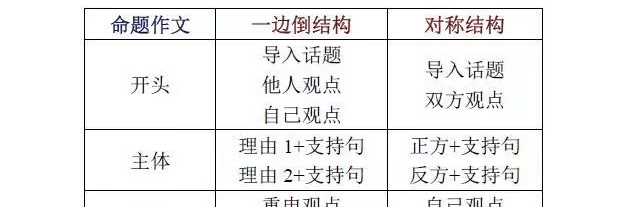英语阅读理解100篇(中级篇)-35
|
Passage Thirty-five (Exploration on the Origin of Continents) The origin of continental nuclei has long been a puzzle. Theories advanced so far have generally failed to explain the first step in continent growth, or have been subject to serious objections. It is the purpose of this article to examine the possible role of the impact of large meteorites or asteroids in the production of continental nuclei. Unfortunately, the geological evolution of the Earth’s surface has had an obliterating effect on the original composition and structure of the continents to such an extent that further terrestrial investigations have small chance of arriving at an unambiguous answer to the question of continental origin. Paradoxically, clues to the origin and early history of the surface features of the Earth may be found on the Moon and planets, rather than on the Earth, because some of these bodies appear to have had a much less active geological history. As a result, relatively primitive surface features are preserved for study and analysis. In the case of both the Moon and Mars, it is generally concluded from the appearance of their heavily cratered surfaces that they have been subjected to bombardment by large meteoroids during their geological history. Likewise, it would appear a reasonable hypothesis that the Earth has also been subjected to meteoroid bombardment in the past, and that very large bodies struck the Earth early in its geological history. The large crater on the Moon listed by Baldwin has a diameter of 285 km. However, if we accept the hypotheses of formation of some of the mare basins by impact, the maximum lunar impact crater diameter is probably as large as 650km. Based on a lunar analogy, one might expect several impact craters of at least 500km diameter to have been formed on Earth. By applying Baldwin’s equation, the depth of such a crater should be about 20km. Baldwin admits that his equation gives excessive depths for large craters so that the actual depth should be somewhat smaller. Based on the measured depth of smaller lunar crater. Baldwin’s equation gives the depth of the zone of brecciation for such a crater as about 75km. The plasticity of the Earth’s mantle at the depth makes it impossible to speak of “bracciation” in the usual sense. However, local stresses may be temporarily sustained at that depth, as shown by the existence of deep-focus earthquakes. Thus, short-term effects might be expected to a depth of more than 50km in the mantle. Even without knowing the precise effects, there is little doubt that the formation of a 500-km crater would be a major geological event. Numerous authors have considered the geological implications of such an event. Donn et al. have, for example, called on the impact of continent-size bodies of sialic composition to from the original continents. Two major difficulties inherent in this concept are the lack of any known sialic meteorites, and the high probability that the energy of impact would result in a wide dissemination of sialic material, rather than its concentration at the point of impact. Gilvarry, on the other hand, called on meteoroid impact to explain the production of ocean basins. The major difficulties with this model are that the morphology of most of the ocean basins is not consistent with impact, and that the origin and growth of continents is not adequately explained. We agree with Donn at al. that the impact of large meteorites or asteroids may have caused continent formation, but would rather think in terms of the localized addition of energy to the system, rather than in terms of the addition of actual sialic material. 1. A mare basin is [A]. a formula for determining the relationship between the depth and width of craters. [B]. a valley that is filled in when a spatial body has impact with the moon or the earth. [C]. a planetoid (small planet) created when a meteorite, upon striking the moon, breaks off a part of the moon. [D]. a dark spot on the moon, once supposed to be a sea, now a plain. 2. The writer does not believe that [A]. an asteroid is larger than a meteorite. [B]. material from space, upon hitting the earth, was eventually distributed. [C]. the earth, at one time, had craters. [D]. ocean were formerly craters. 3. The article is primarily concerned with [A]. the origin of continents. [B]. the relationship between astral phenomena and the moon. [C]. differences of opinion among authoritative geologists. [D]. the relationship between asteroids and meteorites. 4. Sialic material refers to [A]. the broken rock resulting from the impact of a meteorite against the earth. [B]. material that exists on planets other than the earth. [C]. a composite of rock typical of continental areas of the earth. [D. material that is man-made to simulate materials that existed far back in geological history. Vocabulary 1. meteorit 陨石,陨星 2. asteroid (火星和木星轨道间)小行星 3. obliterate 除去,消减……痕迹 4. crater 火山口,陨石坑 5. mare 海,(也指月亮,火星上的)阴暗区 6. impact 撞击 7. impact crater 陨石坑,撞击火山 8. brecciate 合成角砾岩 the zone of brecciation 角砾岩地带 9. mantle 地幔 10. stress 应力 local stress 局部(本身)应力 11. sialic 硅铝的 12. probability 概率,可能性 13. disseminate 传播,分散,浸染 14. morphology 组织,结构,形态(学) 15. astral 星(星状体)的 难句译注 1. Unfortunately, the geological evolution of the Earth’s surface has had an obliterating effect on the original composition and structure of the continents to such an extent that further terrestrial investigations have small chance of arriving at an unambiguous answer to the question of continental origin. [结构简析] 句中用such…that 句型。 [参考译文] 遗憾的是,地球表面的地质变化对大陆原始结构和组成起了抹煞的作用。这种消除作用达到了这种程度,使进一步的大陆的研究工作很难对大陆起源问题去得明确的答案。 2. In the case of both the Moon and Mars. It is generally concluded from the appearance of their heavily cratered surfaces that they have been subjected to bombardment by large meteoroids during their geological history. [结构简析] in the case of 就……说,至于……,论到。 [参考译文] 拿月亮和火星来说,一般都从它们表面严重的陨石坑得出结论:它们在其地质进化过程中遭到过巨大的陨星的撞击。 3. Two major difficulties inherent in this concept are the lack of any known sialic meteorites, and the high probability that the energy of impact would result in a wide dissemination of sialic material, rather than its concentration at the point of impact. [结构简析] that clause 是high probability 的说明同位语。 [参考译文] 这一概念本身固有的两大难点是缺乏任何已知的硅铝陨石和下列现象的高概率:即撞击的能量会导致硅铝材料广泛分散,而不是集中于撞击点上。 写作方法与文章大意 文章一开始就说明了此文论述“大陆核生成过程中大的陨星的撞击作用。”由于地球表面地质进化抹去了大陆原始结构和组成的痕迹,只好由月亮和火星作为研究对象来说明地球。从三方面来论述:一是鲍德温的方程式,深度和宽度;二是硅铝组成;三是海洋盆地。最后结论。 答案祥解 1. D. 是月球上的一个黑点,一度认识是海,现在知道是平原。Mare basin海盆地。词义本身说明D项对。另一方面,第二段开始提及“鲍德温所列出的月球上最大的陨石坑直径为285公里。可是,如果我们接受了某些由于撞击而形成海盆地的结构假设,那么月球上最大陨石坑的直径可能有650公里大。”这里都说mare basin指的是月球上陨石坑。这就排除了A,B,C三个选项。 A. 是测定陨石坑深度和宽度的公式。 B. 当某一天体或地球撞击时填入的深谷。 C. 当陨星撞击月亮时,撞掉的部分月亮而形成小星体。 2. D. 海洋是原来的陨石坑。倒数第二段“另一方面,Gilvarry 用陨星撞击来解释海洋盆地的形成。这一模式的最大困难在于大多数海洋盆地结构和撞击情况不符。” A. 小行星大于陨星。 B. 来自太空的材料,在撞击地球时,均匀分布。 C. 地球一度有过陨石坑。这三项明显不对, 谈不上相信不相信。 3. A. 大陆起源。这在文章一开始就点明“大陆核起源长期以来一直是个谜。进展到现在的理论一般都不能说明大陆生长的第一步情况,或者遭到严厉的反对。这篇文章的目的就是要研究大陨星或小行星的撞击在地球核生成中可能起的作用。”另见难句译注1。 B. 星际现象和月球的关系。 C. 权威地质学家意见分歧。 D. 小行星和陨星之间的关系。 4. C. 地球大陆地区特有的岩石构成。第三段第三句:“举例说,Donn et al.提出大陆区域大小的,硅铝结构的天体撞击形成最初的大陆块的设想。”其它见难句译注3。 A. 由于陨星撞击地球形成破碎的岩石。 B. 存在于地球之外其它星球的材料。 C. 人造材料模拟存在于遥远地质史上的材料。三项文内都没有提到。 |

